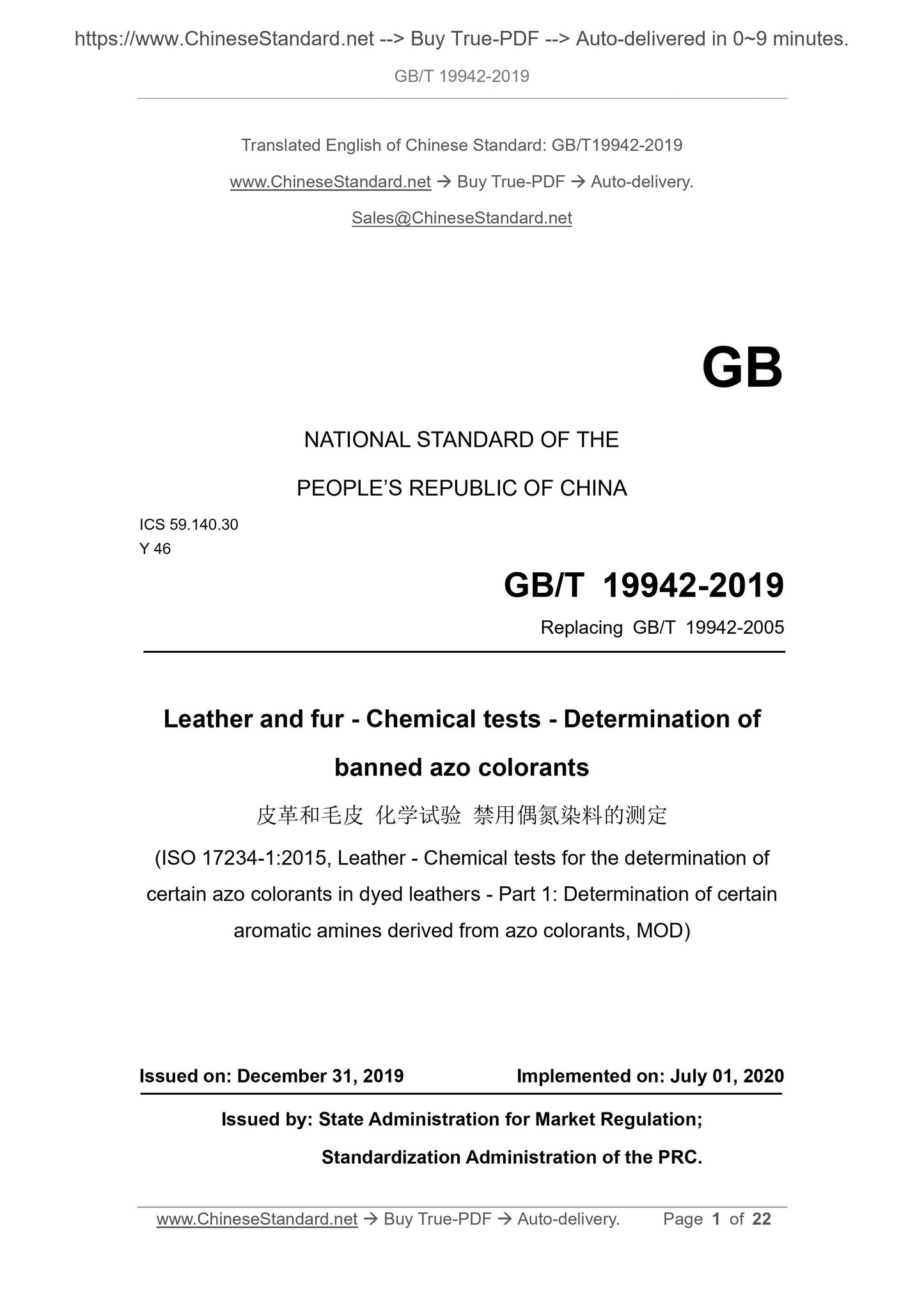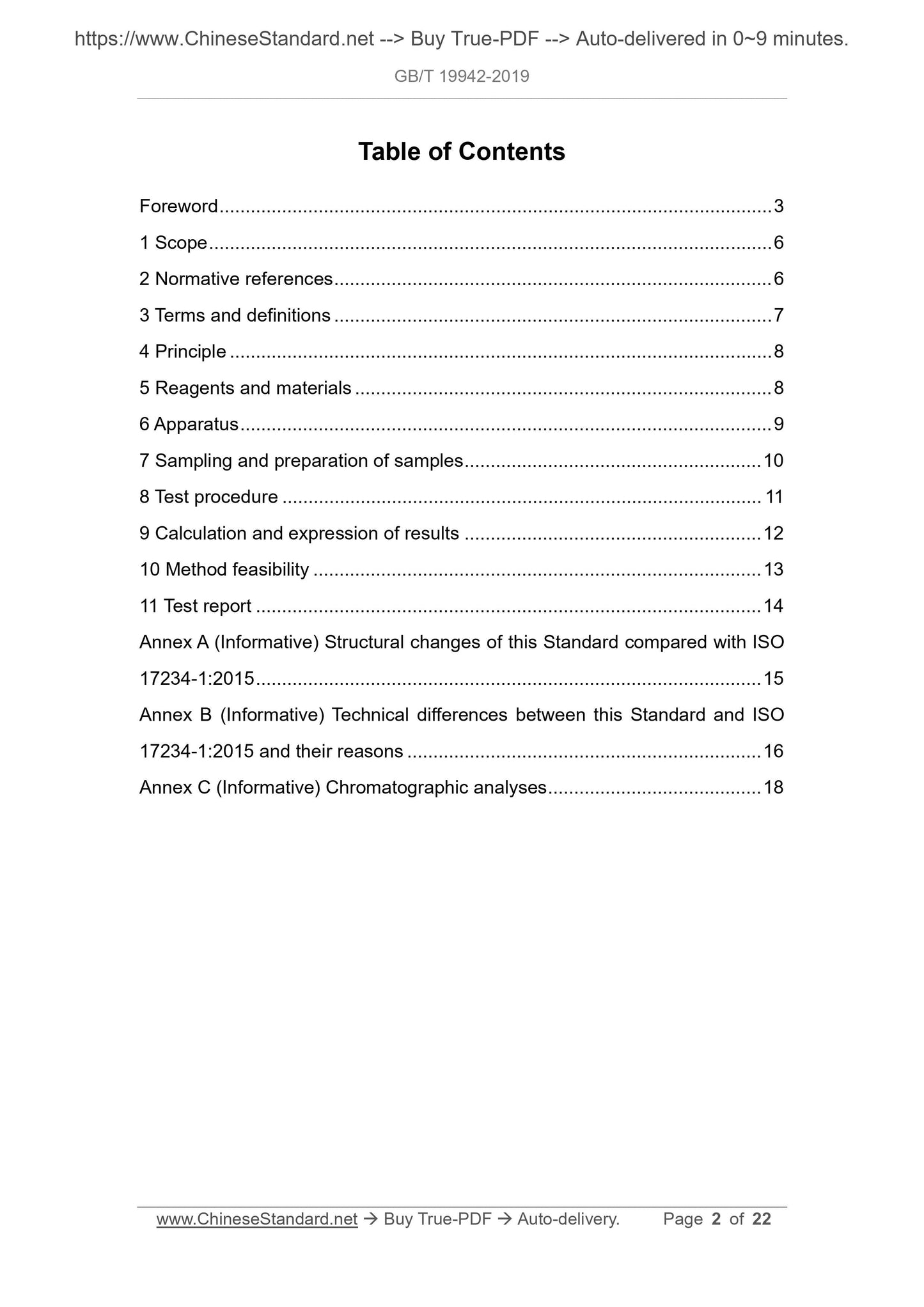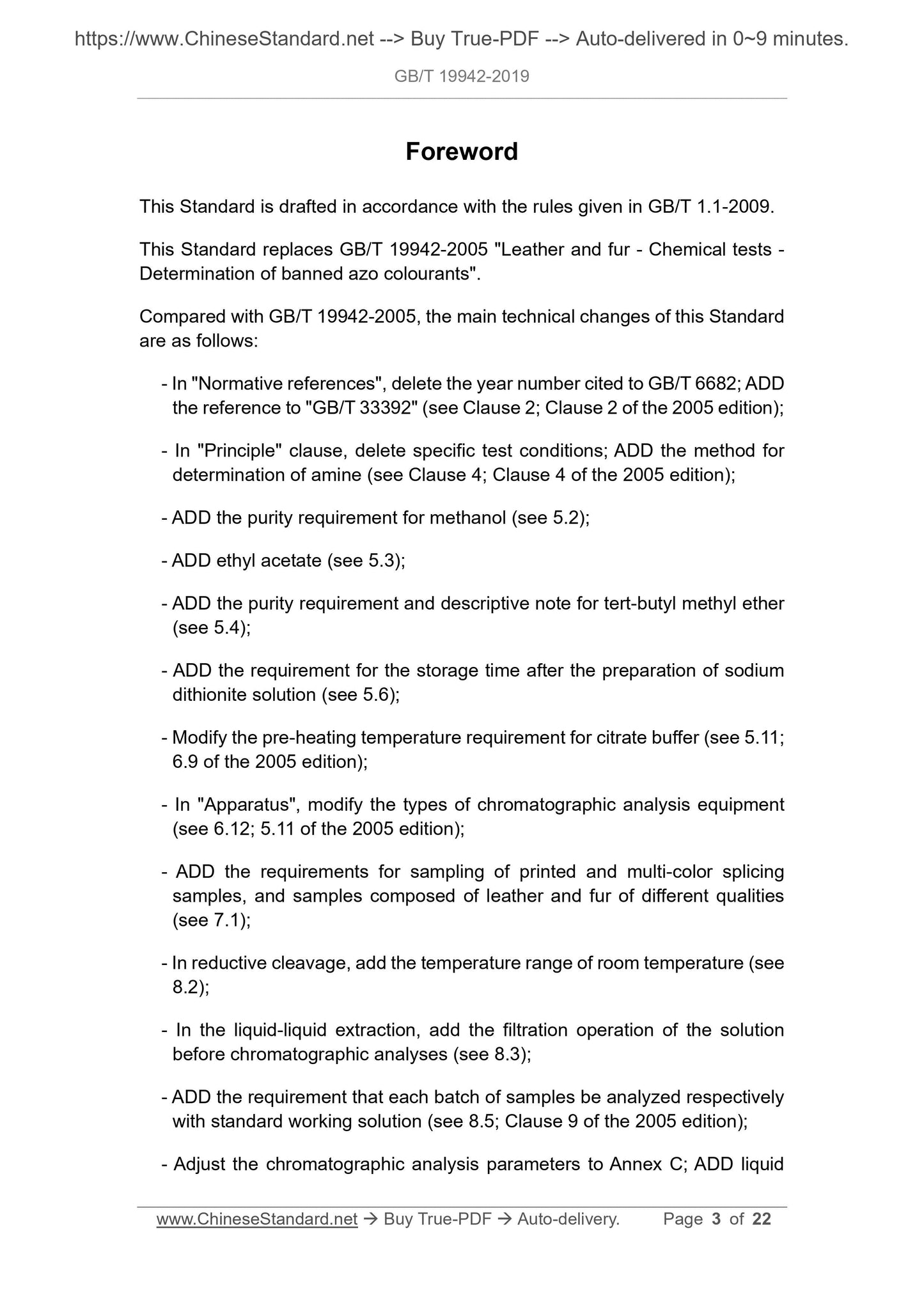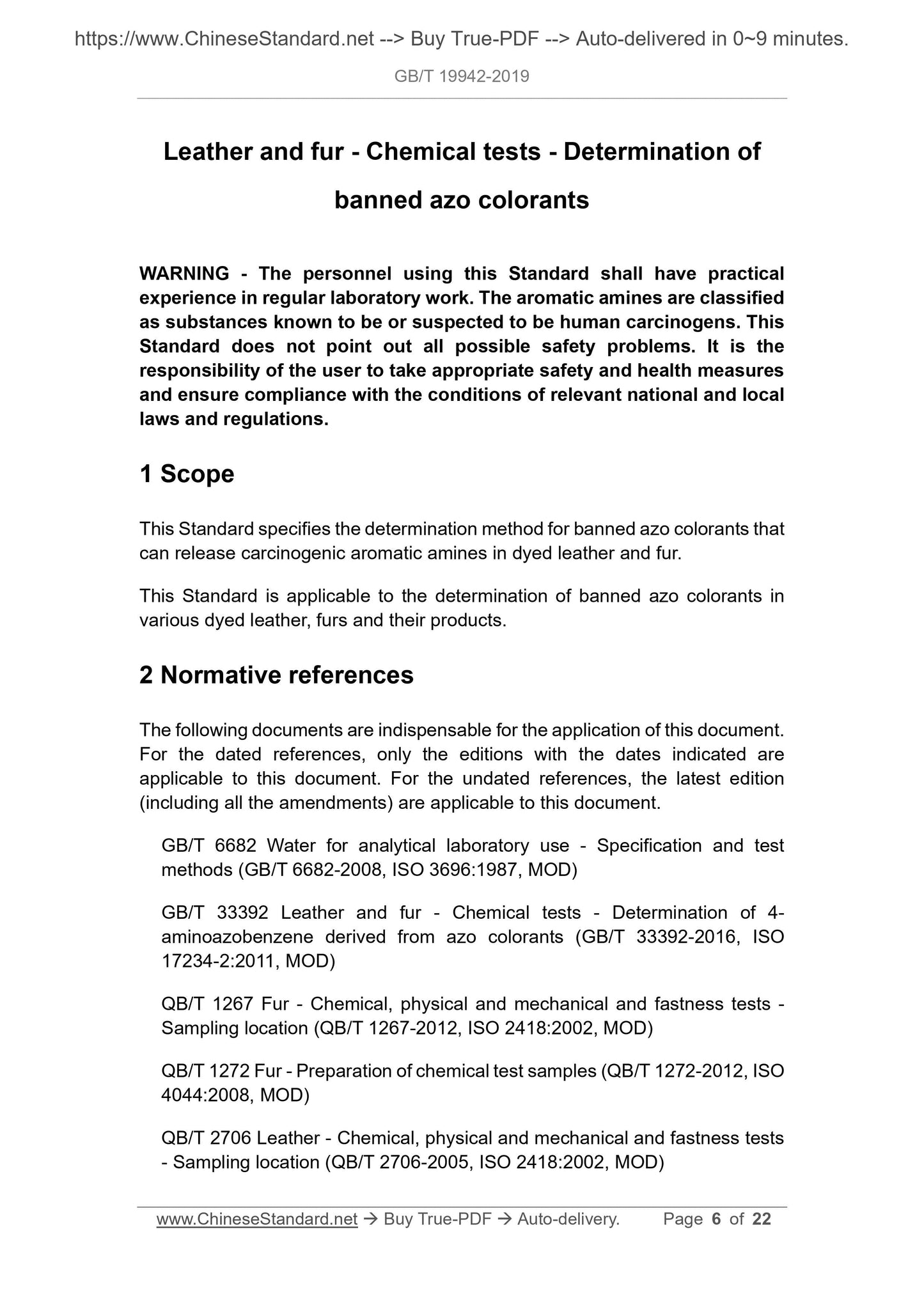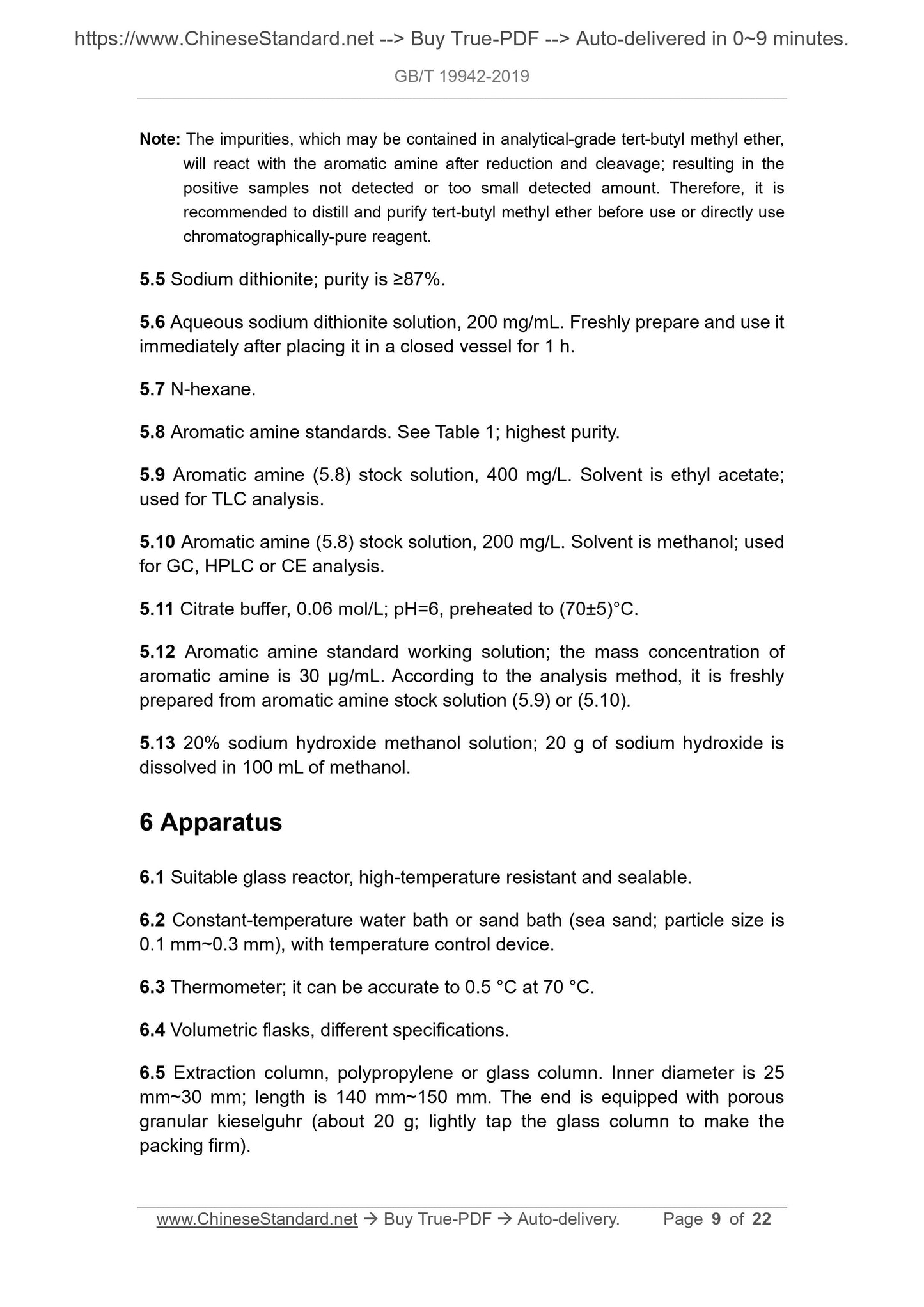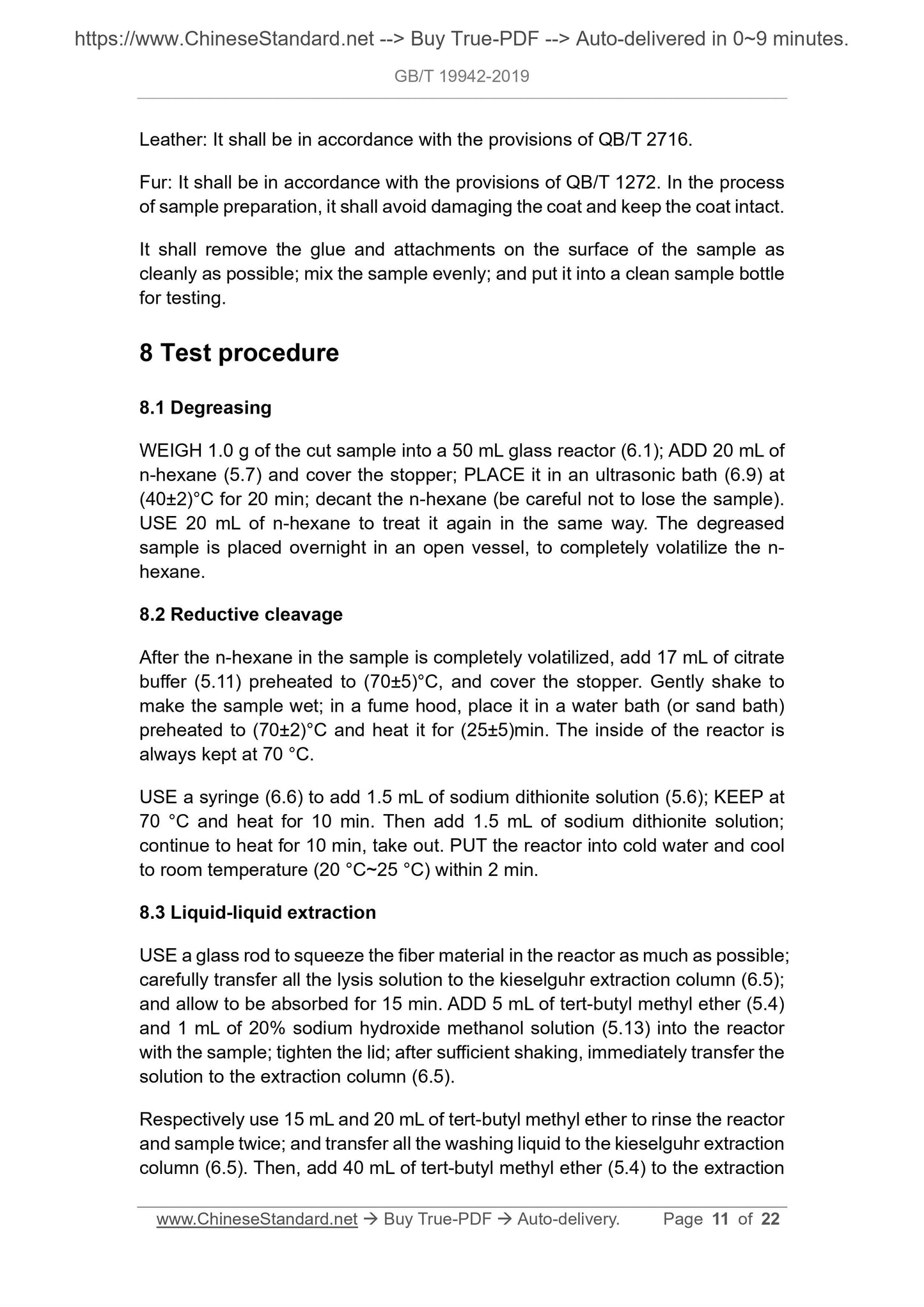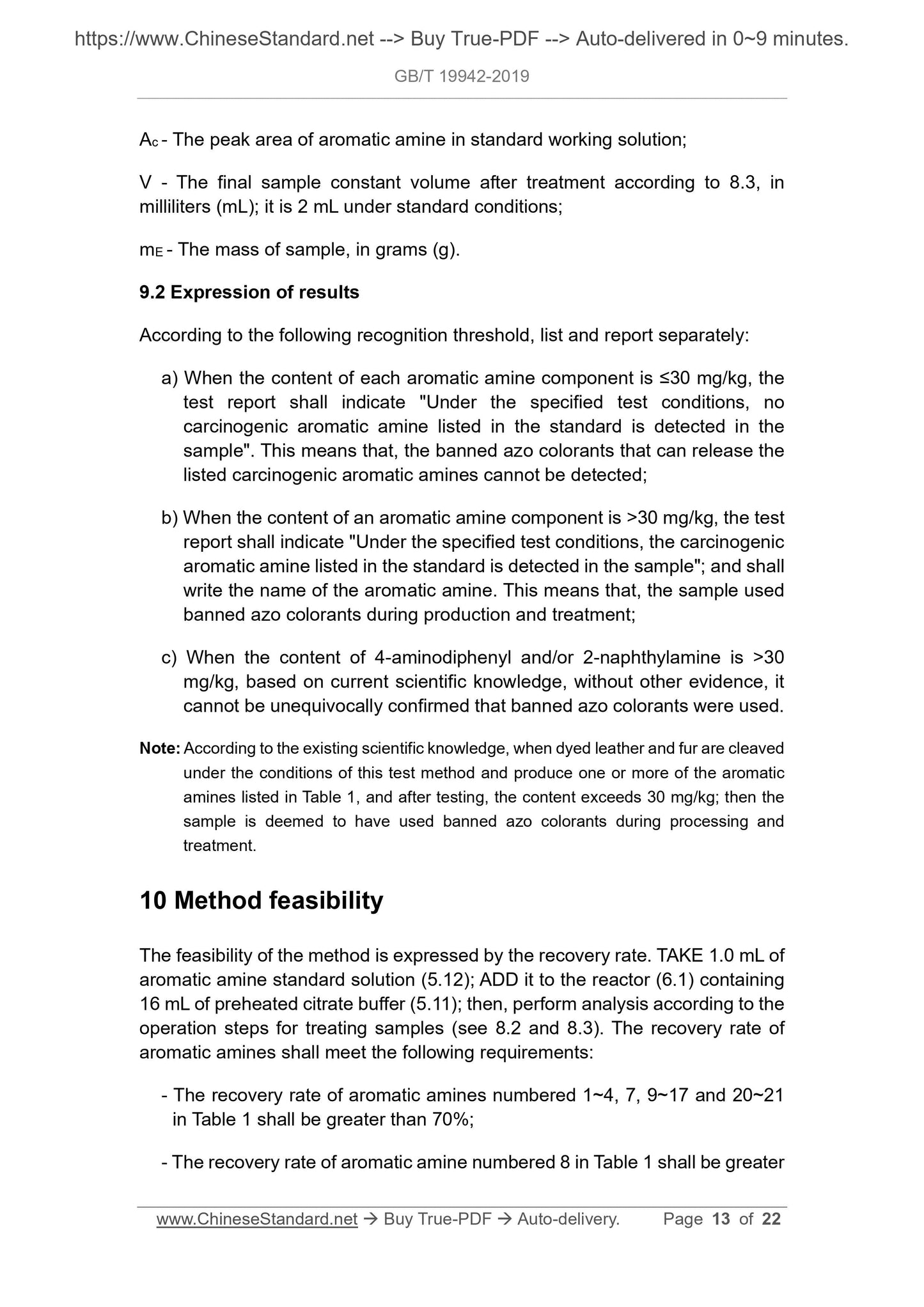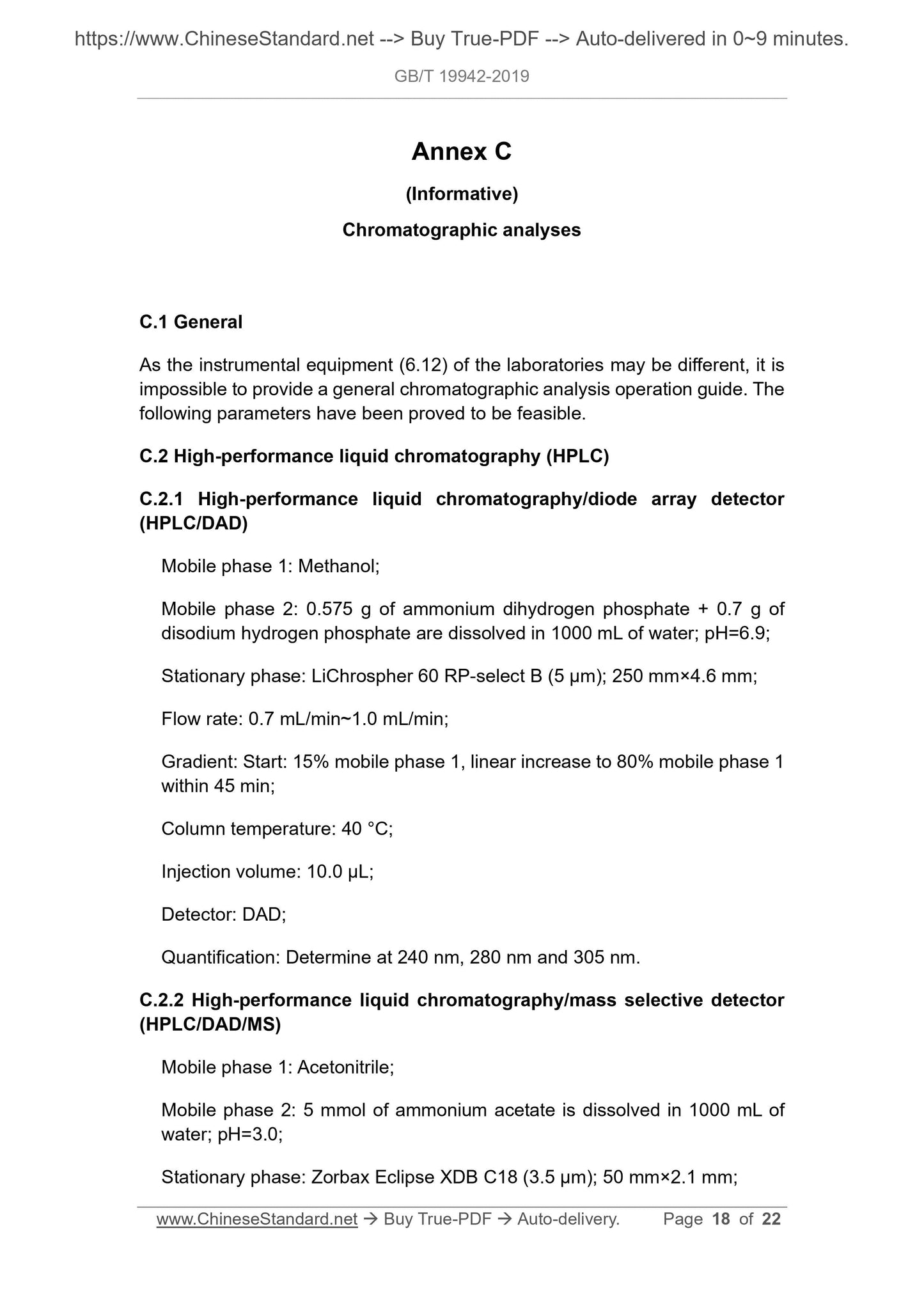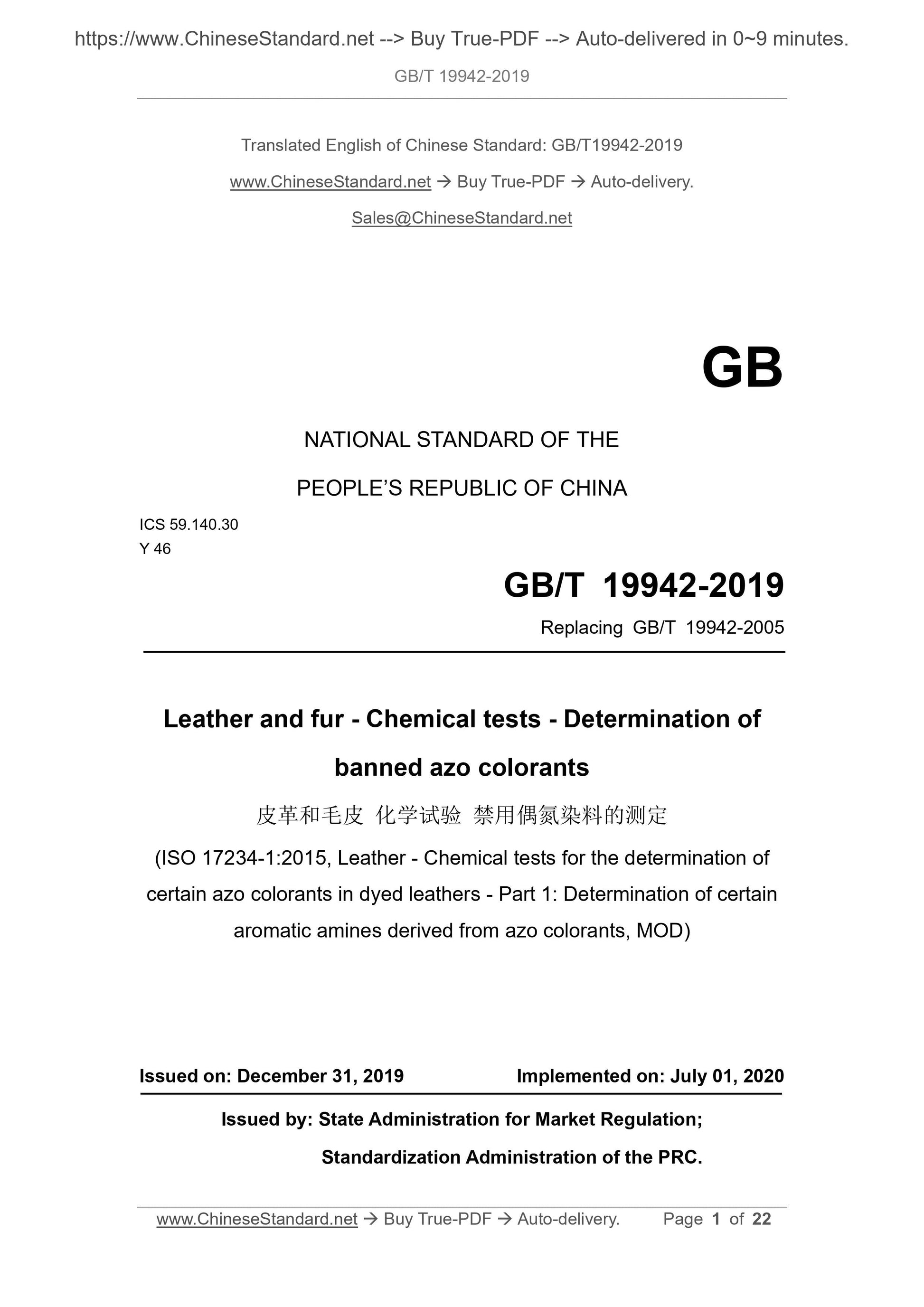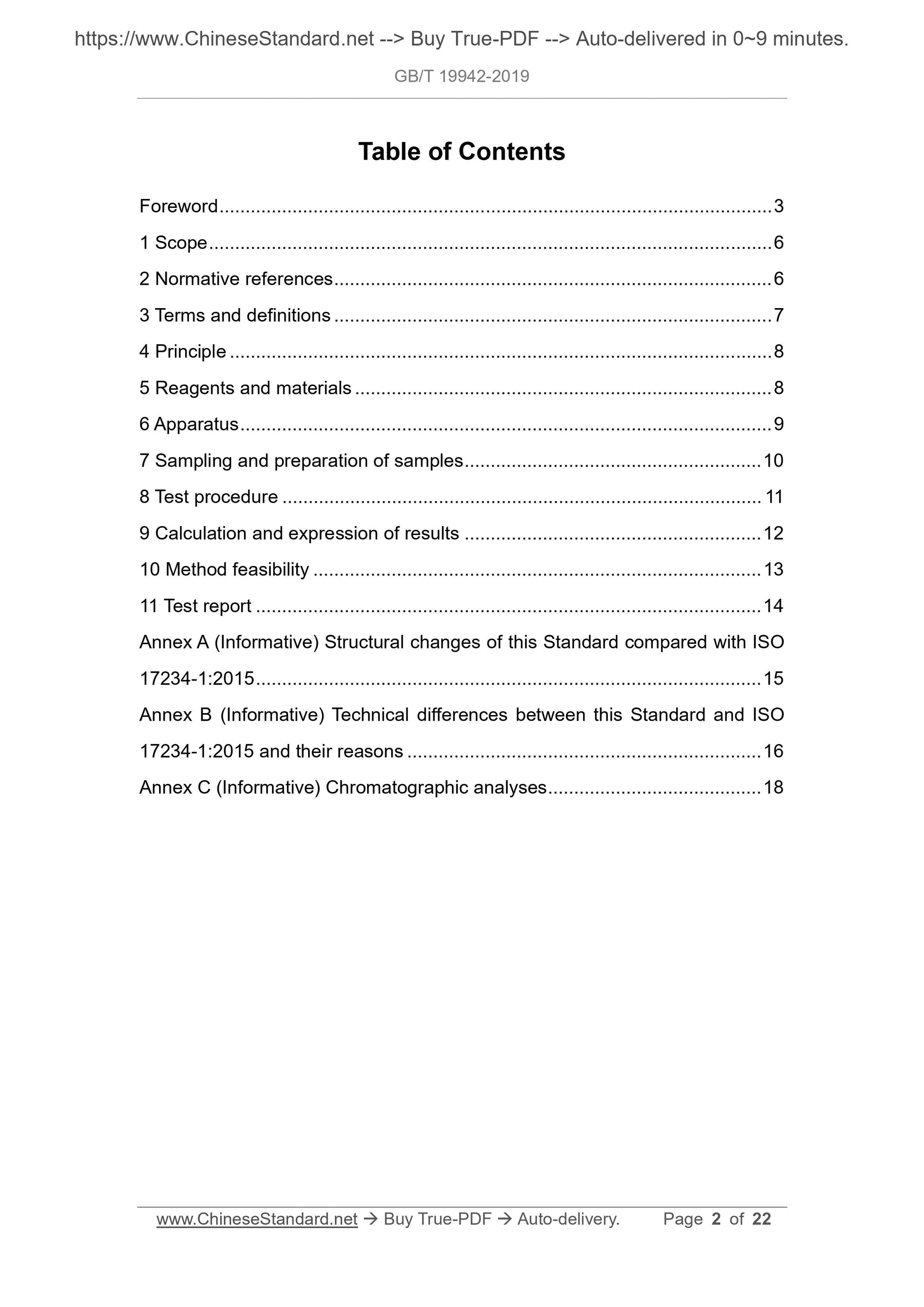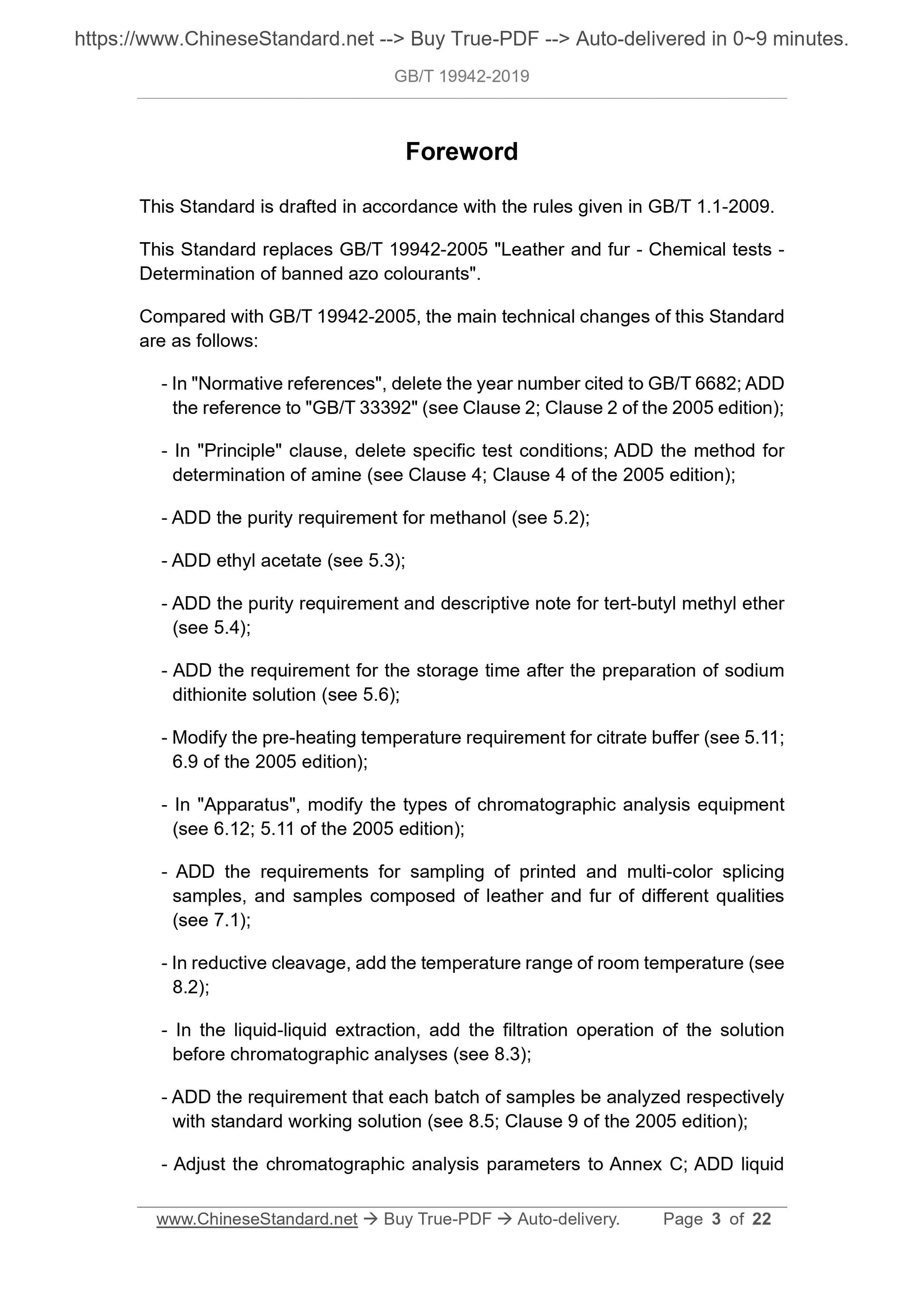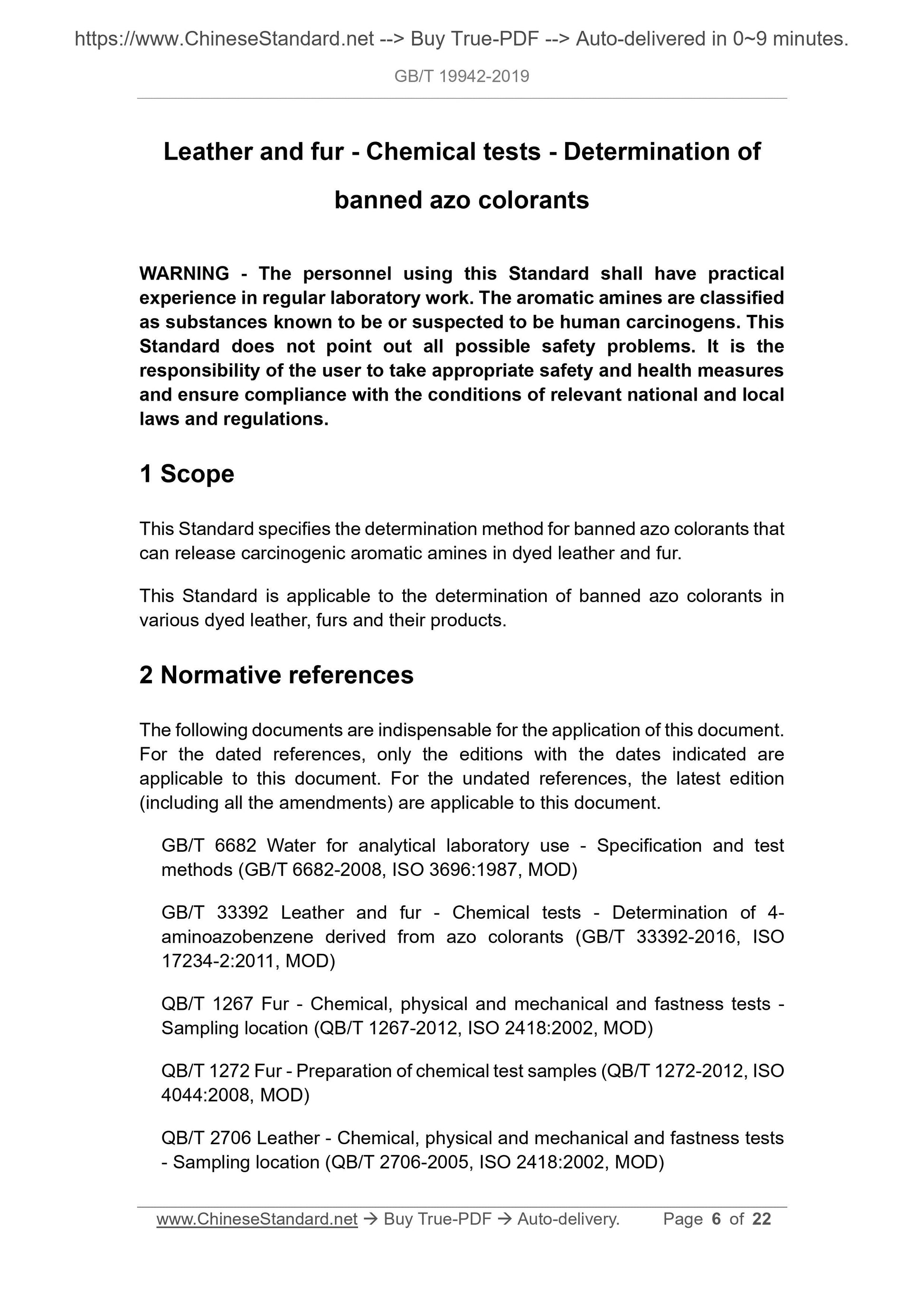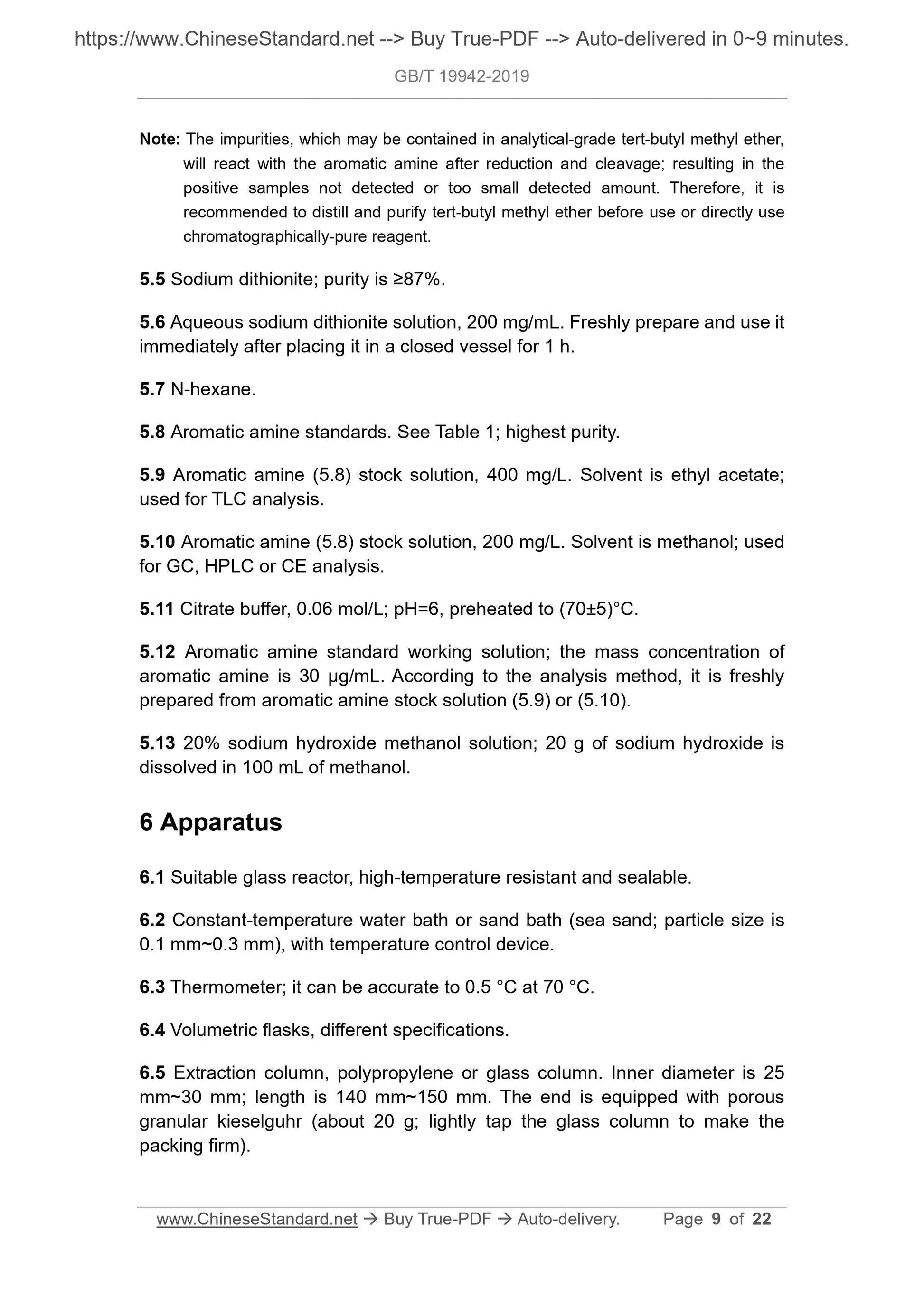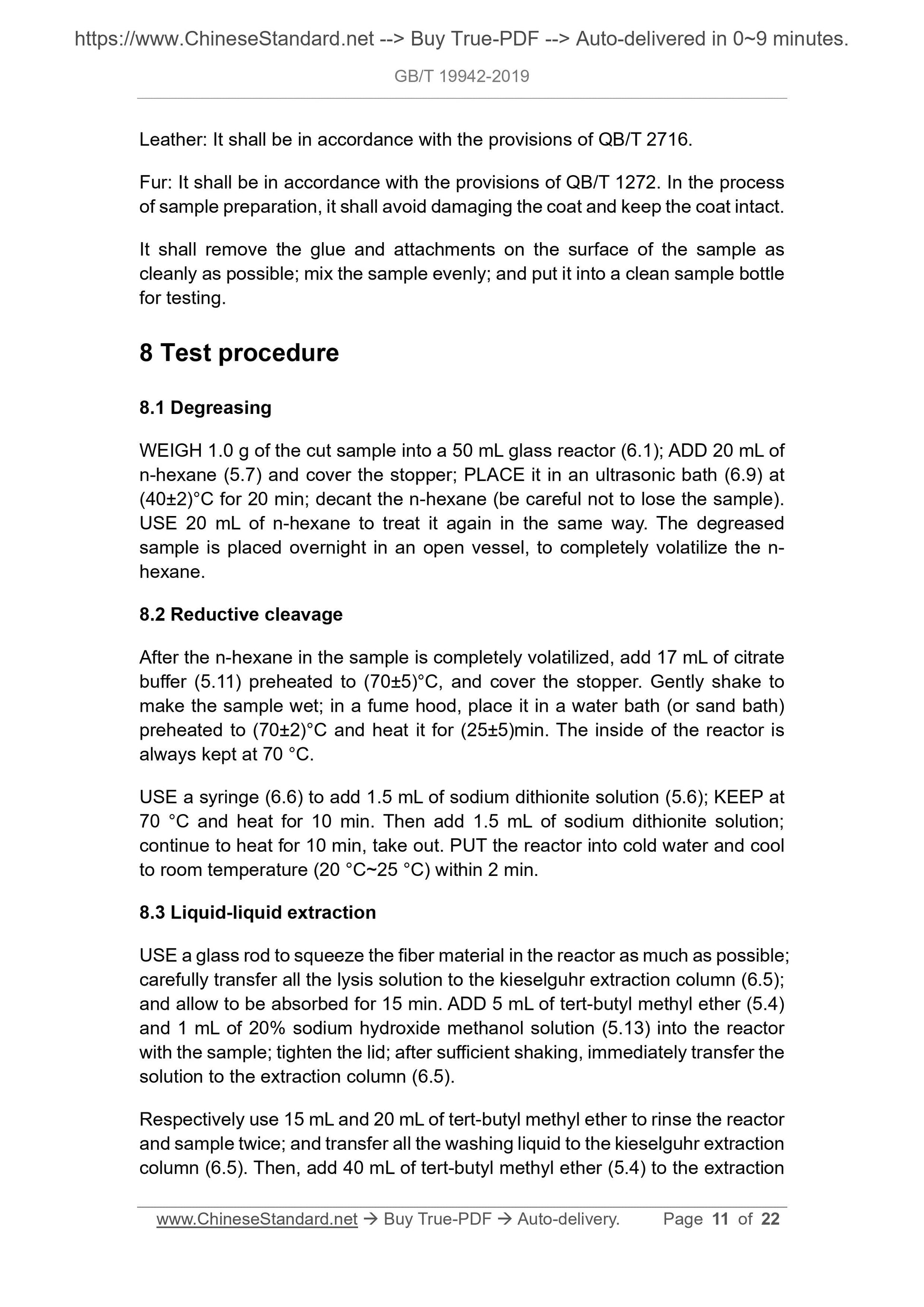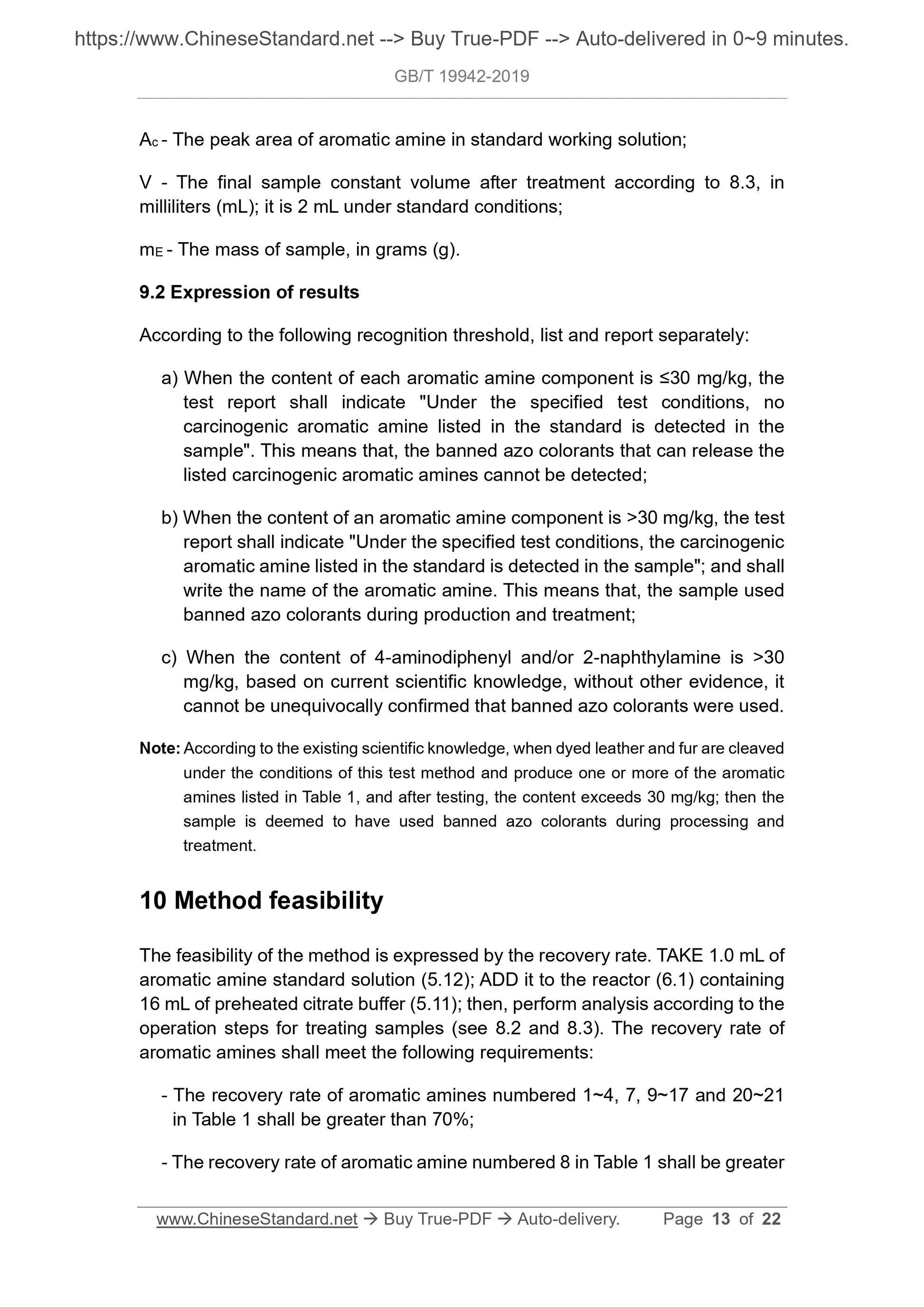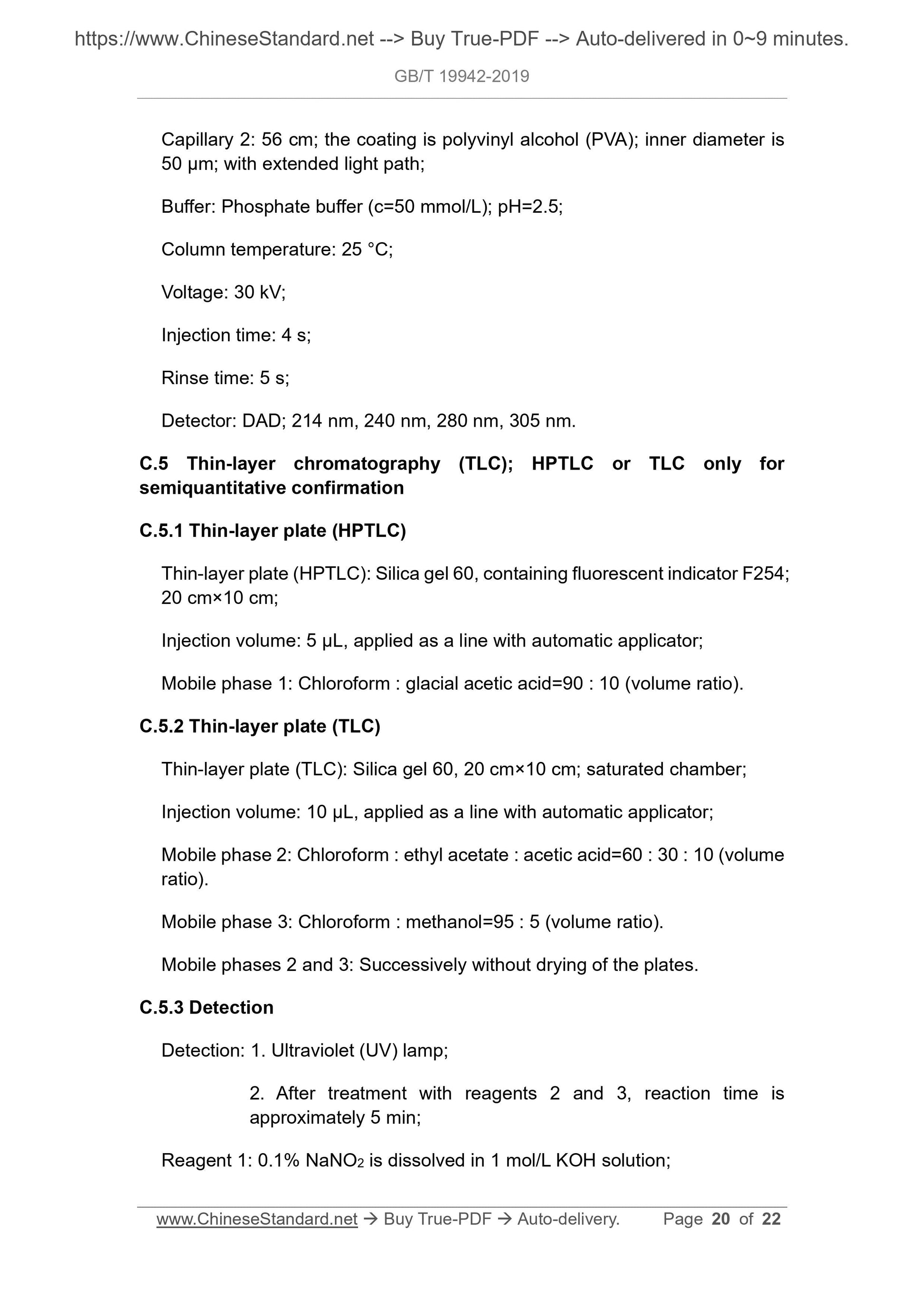1
/
of
9
www.ChineseStandard.us -- Field Test Asia Pte. Ltd.
GB/T 19942-2019 English PDF (GB/T19942-2019)
GB/T 19942-2019 English PDF (GB/T19942-2019)
Regular price
$175.00
Regular price
Sale price
$175.00
Unit price
/
per
Shipping calculated at checkout.
Couldn't load pickup availability
GB/T 19942-2019: Leather and fur - Chemical tests - Determination of banned azo colorants
Delivery: 9 seconds. Download (and Email) true-PDF + Invoice.Get Quotation: Click GB/T 19942-2019 (Self-service in 1-minute)
Newer / historical versions: GB/T 19942-2019
Preview True-PDF
Scope
This Standard specifies the determination method for banned azo colorants thatcan release carcinogenic aromatic amines in dyed leather and fur.
Basic Data
| Standard ID | GB/T 19942-2019 (GB/T19942-2019) |
| Description (Translated English) | Leather and fur - Chemical tests - Determination of banned azo colorants |
| Sector / Industry | National Standard (Recommended) |
| Classification of Chinese Standard | Y46 |
| Classification of International Standard | 59.140.30 |
| Word Count Estimation | 14,127 |
| Date of Issue | 2019-12-31 |
| Date of Implementation | 2020-07-01 |
| Older Standard (superseded by this standard) | GB/T 19942-2005 |
| Quoted Standard | GB/T 6682; GB/T 33392; QB/T 1267; QB/T 1272; QB/T 2706; QB/T 2716 |
| Adopted Standard | ISO 17234-1-2015, MOD |
| Issuing agency(ies) | State Administration for Market Regulation, China National Standardization Administration |
| Summary | This standard specifies the method for the determination of banned azo dyes in dyed leather and fur that can crack to release carcinogenic aromatic amines. This standard applies to the determination of banned azo dyes in various dyed leathers, furs and their products. |
Share
